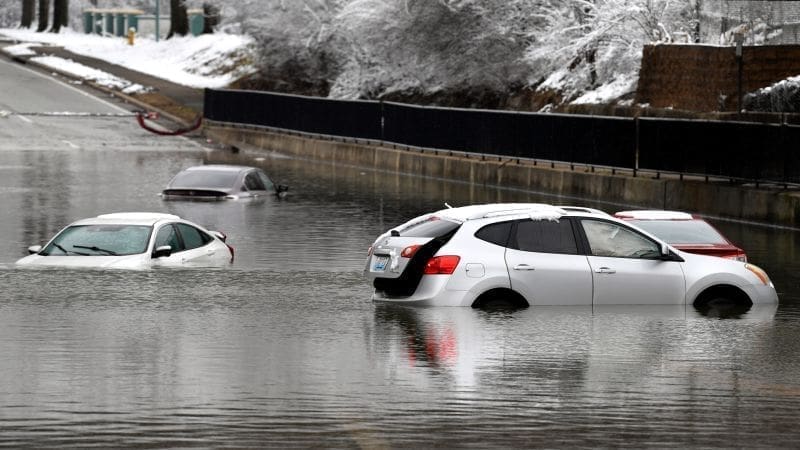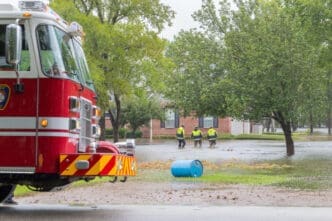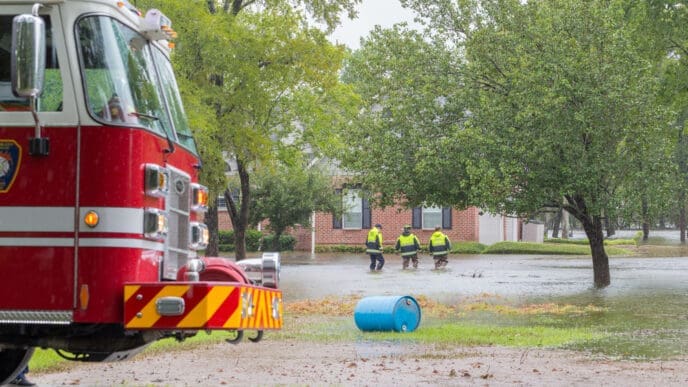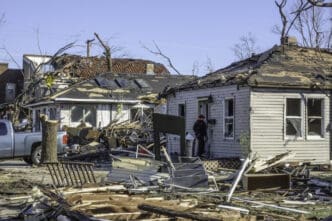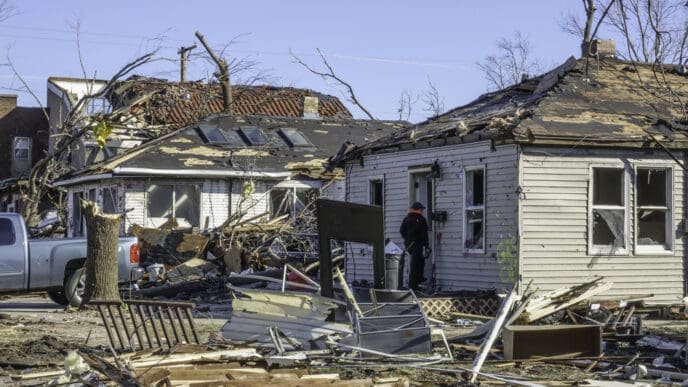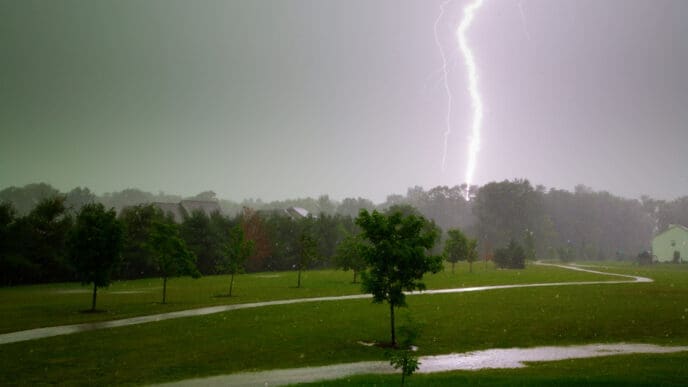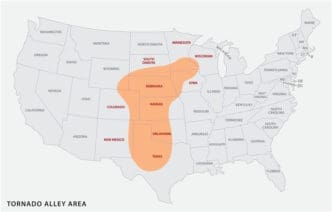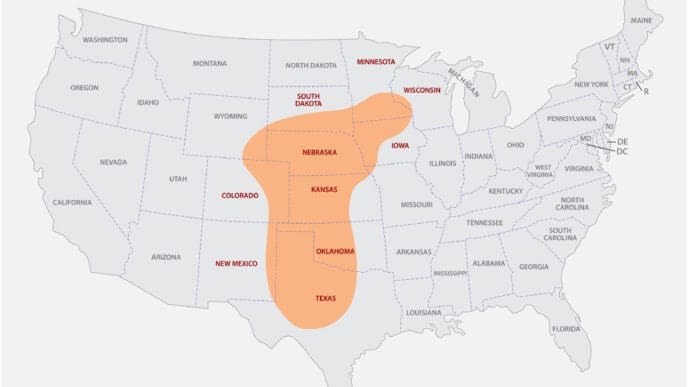Rivers across the US South and Midwest have surged, leading to intensified flooding that threatens communities already reeling from days of relentless rainfall and strong winds. The severe weather has resulted in the tragic loss of at least 18 lives. Despite a decrease in rainfall in some of the hardest-hit areas, such as Arkansas, Tennessee, and Kentucky, water levels continue to rise, submerging homes, businesses, and roads.
In Frankfort, Kentucky, rescue teams have been navigating the inundated streets using inflatable boats to ensure the safety of residents in the state capital. Efforts to protect homes and businesses have included the construction of sandbag barriers, while utilities have been shut off to mitigate risks as the Kentucky River swells. The river’s depth, which exceeded 14 meters as of Sunday, is expected to approach nearly 15 meters by Monday morning, nearing a record high. The city’s flood wall system is designed to withstand water levels up to 15.5 meters.
Meteorologists warn that flooding may continue as heavy rains persist across several states. Tornado watches were issued in parts of Alabama, Georgia, and Florida throughout much of Sunday, underscoring the widespread nature of the storm’s impact.
The storms have led to significant loss of life, with 18 fatalities reported since Wednesday, including 10 individuals from Tennessee. Tragic incidents include a 9-year-old boy in Kentucky who was swept away by floodwaters while heading to his school bus and a 5-year-old boy in Arkansas who died when a tree fell on his home. Additionally, a 16-year-old volunteer firefighter from Missouri lost his life in a vehicle accident during rescue efforts.
The National Weather Service (NWS) has indicated that numerous locations are expected to reach a “major flood stage,” with widespread flooding of structures, roads, bridges, and other critical infrastructure likely. Emergency officials have ordered the evacuation of towns like Falmouth and Butler in north-central Kentucky, located near the rising Licking River. Three decades ago, the river reached a record height of 15.24 meters, resulting in five fatalities and the destruction of 1,000 homes.
These storms follow job cuts at NWS forecast offices under the Trump administration, leaving many offices with significant vacancy rates, which are now double those of a decade ago.
A small town in northwestern Tennessee, home to around 200 residents, was nearly completely submerged on Sunday after the Obion River overflowed due to a levee failure in February. As of early Sunday, Memphis had recorded 14 inches (35 centimeters) of rain since Wednesday, while West Memphis and Arkansas had received 10 inches (25 centimeters). The weather system continued to move eastward, causing trees to fall in Alabama and Georgia.
Forecasters have attributed the severe weather conditions to elevated temperatures, an unstable atmosphere, strong winds, and an influx of moisture from the Gulf.
The Bottom Line
- The persistent flooding poses a significant threat to the safety and well-being of residents in the affected regions, emphasizing the importance of emergency preparedness and response.
- Communities face substantial economic impacts due to the damage to homes, businesses, and infrastructure, potentially leading to long-term financial strain.
- The severe weather highlights the need for adequate staffing and resources at the National Weather Service to ensure timely and accurate forecasts, which are crucial for public safety.
- The rising water levels and continued rainfall may result in prolonged disruptions to daily life, including transportation challenges and access to essential services.
- The events underscore the broader implications of climate change, as increased temperatures and extreme weather patterns become more frequent, necessitating adaptive strategies for communities nationwide.

